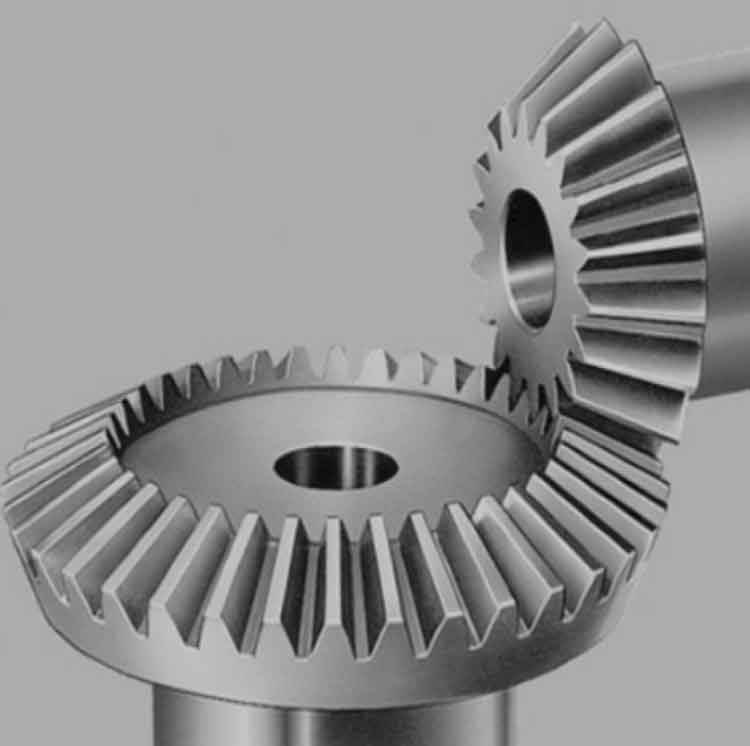
Straight bevel gears offer several advantages and have certain limitations when used in gear systems. Let’s explore them:
Advantages:
- Efficient Power Transmission: Straight bevel gears provide efficient power transmission between intersecting shafts. The meshing of straight teeth allows for smooth transfer of torque, resulting in minimal energy losses.
- Compact Design: Straight bevel gears have a compact design, making them suitable for applications with limited space constraints. They can transmit motion and power effectively in tight spaces.
- Versatility: Straight bevel gears can be used in a wide range of applications and industries, including automotive, industrial machinery, aerospace, and more. They are capable of handling various load capacities and speed requirements.
- Cost-Effective: Straight bevel gears are often more cost-effective to manufacture compared to other types of bevel gears. Their straight tooth profile simplifies the manufacturing process, resulting in lower production costs.
- Ease of Assembly: Straight bevel gears are relatively easy to assemble and align. Their design allows for straightforward installation and maintenance procedures.
Limitations:
- Limited Speed Range: Straight bevel gears are typically limited to low to moderate rotational speeds due to the sliding action of the teeth during engagement. High-speed applications may require alternative gear types, such as helical gears.
- Axial Thrust and Load Distribution: The engagement of straight bevel gears generates axial thrust, which can introduce additional forces on the shafts and bearings. Proper load distribution and thrust management techniques, such as incorporating thrust bearings or adjusting gear geometry, are necessary to mitigate these effects.
- Higher Noise and Vibration: Straight bevel gears tend to produce more noise and vibration compared to some other gear types, such as helical gears. The sliding action of the teeth can result in increased noise levels, requiring additional measures to control noise and vibration in sensitive applications.
- Limited Load Capacity: Straight bevel gears may have a relatively lower load-carrying capacity compared to some other gear types, such as spiral bevel gears. Their straight teeth design may limit the size and surface area of the contact region, affecting their ability to handle heavy loads.
- Limited Misalignment Tolerance: Straight bevel gears are sensitive to misalignment between the shafts. Proper alignment during installation is crucial to ensure smooth operation and prevent premature wear or failure.
Understanding the advantages and limitations of straight bevel gears is essential in selecting the appropriate gear type for a specific application. Factors such as load capacity, speed requirements, space constraints, noise considerations, and cost-effectiveness should be carefully evaluated to determine the suitability of straight bevel gears in a gear system.
